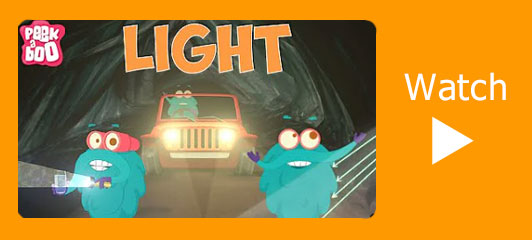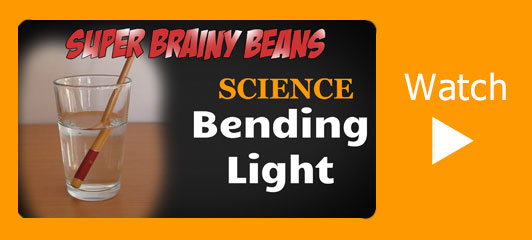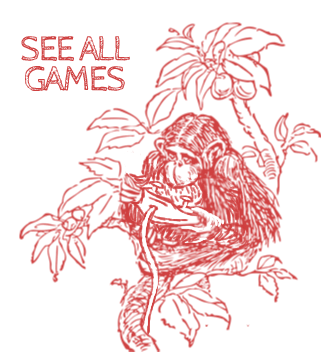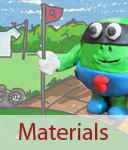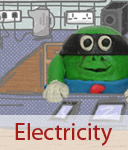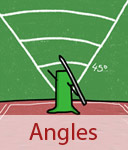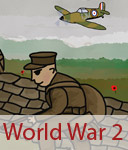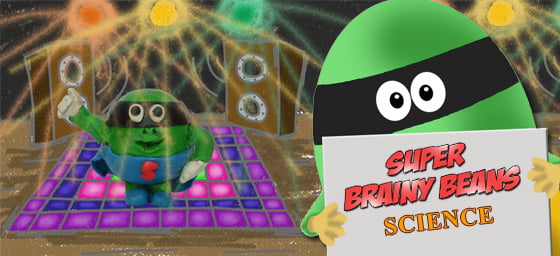
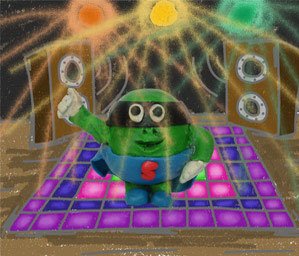
Light & Sound
Year 5 & 6
Light & sound for Year 5 & 6 kids at Super Brainy Beans. Science homework help with how light helps us see things and how shadows can change. For children in Year 5 and 6, Key Stage 2 (KS2).
Pick a level
How light travels
Light travels in a straight line.
You can see this by cutting a very small sliver out of a piece of card. Using a torch, shine the light through the card. You can see that the light travels in a straight line. If you have a mirror put this in the path of the line and see how it bends. It maybe faint but you may just be able to make it out.
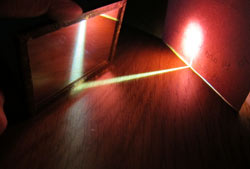
How we see things
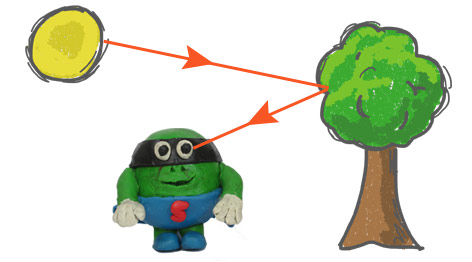
 How does the eye detect light?
How does the eye detect light?Light travels in straight lines. When light hits an object, it is reflected (bounces off) and enters our eyes. This is how we see the object.
Reflections
Mirrors reflect light. They also reflect light at the same angle. If you look below the light ray coming in on the left bounces back out at the same angle on the right.
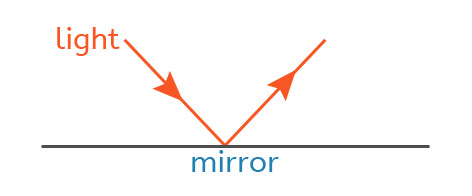
This is very useful if you needed to look around corners. Placing the mirror in the right place will let you see around a wall that may be in the way. Try this at home. Find a mirror and see if you can spy on your parents without them knowing you are there!
To see above the seawater, submarines use mirrors inside a periscope. The light ray is bounced off several mirrors and into the eye of the person viewing.
 What is reflection?
What is reflection?When light from an object is reflected by a surface, it changes direction. It bounces off the surface at the same angle as it hits it.
How shadows work
Light travels in straight lines which means it does not bend. So when something gets in the way it forms a shadow, an area of darkness where light cannot get to.
Shadows change depending on how close the light source is to the object. If the object is close to the light source you will get a big shadow. If the object is far away from the source you will get a smaller shadow.
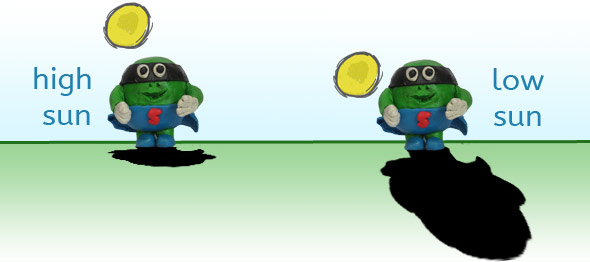
Shadows also change depending on the time of day. In the mornings and evenings, the sun is low and creates long shadows. In the middle of the day, the sun is high in the sky and creates shorter shadows. No matter where the light source is, the shape of the shadow will always be the same. It is just smaller, longer, shorter or bigger.
![]() Testing shadows - On a sunny day take some objects outside and lay them on a patio. With some chalk draw round the shadows they create at different times of the day. Notice how they are different?
Testing shadows - On a sunny day take some objects outside and lay them on a patio. With some chalk draw round the shadows they create at different times of the day. Notice how they are different?
Rainbows
Light is made up of many different colours. When the sun shines through water, the water splits the light into all the colours of a rainbow. So if it is raining and the sun is out, you will see a rainbow. Stand with your back to the sun and you will see the rainbow in the sky. The sunlight is shining through the raindrops and splitting it up into all the colours and projecting it onto the sky.

How do we get a double rainbow?
When we see a double rainbow the light is being split twice through the raindrops. Next time you see a double rainbow take a look. The second rainbow is always fainter and the colours are reversed. This is all caused by the refection of the light through the raindrops.

 Water rainbow
Water rainbow
Shine a torch through a glass of water in a dark room. Twist the glass a little until you see a rainbow on the table or on the wall.
This next experiment works best on a sunny day. Take the glass of water outside in the sunshine. Hold the glass over a piece of white paper and move it slowly until you see a rainbow.
Sounds
 How are sounds made?
How are sounds made?Sounds are made when objects vibrate. The vibrations enter your ear and you hear them as sound. Find out more about how sound travels.
 How are sounds detected?
How are sounds detected?Sound waves make the eardrum vibrate and then send messages to the brain. Find out more about how the ear detects sounds.
 What is a pitch?
What is a pitch?A drum with a tight skin makes a high pitched wave. Find out more about sound waves and pitch.
 What is the volume of sound?
What is the volume of sound?Sounds are vibrations that travel through the air. A weak vibration doesn't travel very far. Discover more about volume.

